- About MTN
Would you like to stay up to date on the latest MTN world news? Products, graffiti, murals, festivals, art and much more.
Return Working Women Animated on a Giant Scale by Israeli Artist Holy Era
Holy Era is a self-taught artist based in Haifa, Israel. Inspired by graffiti, she has gone on to develop her own way of working, combining street art, animation and feminism. To round off #mtnwomensmonth, we got in touch with her to find out how she got started in rural Israel, pros and cons of being a female writer and her international series dedicated to women in the public space.
So where are you from?
I grew up in the center of Israel. Then I moved to a town near Tel Aviv before going to Jerusalem to study. Then I came to Haifa.
Is that when you started painting?
I’ve been painting since childhood and started experimenting with graffiti as a teen.
Who were you inspired by?
I grew up in a village and there was no graffiti. I was inspired by my cousin, Tal Cooperman, who grew up in Los Angeles. He was a graffiti writer. My mum taught him to paint when he was a kid. He sent us analog pictures by post when he started writing. That was the first time I saw that kind of work.
I started painting by myself. I didn’t know anyone. I used to go to abandoned buildings in the middle of nowhere and I learnt how to use a can all by myself.
It was kind of dangerous sometimes. A young girl going alone to paint in these places. Now I’m not brave enough to do it!
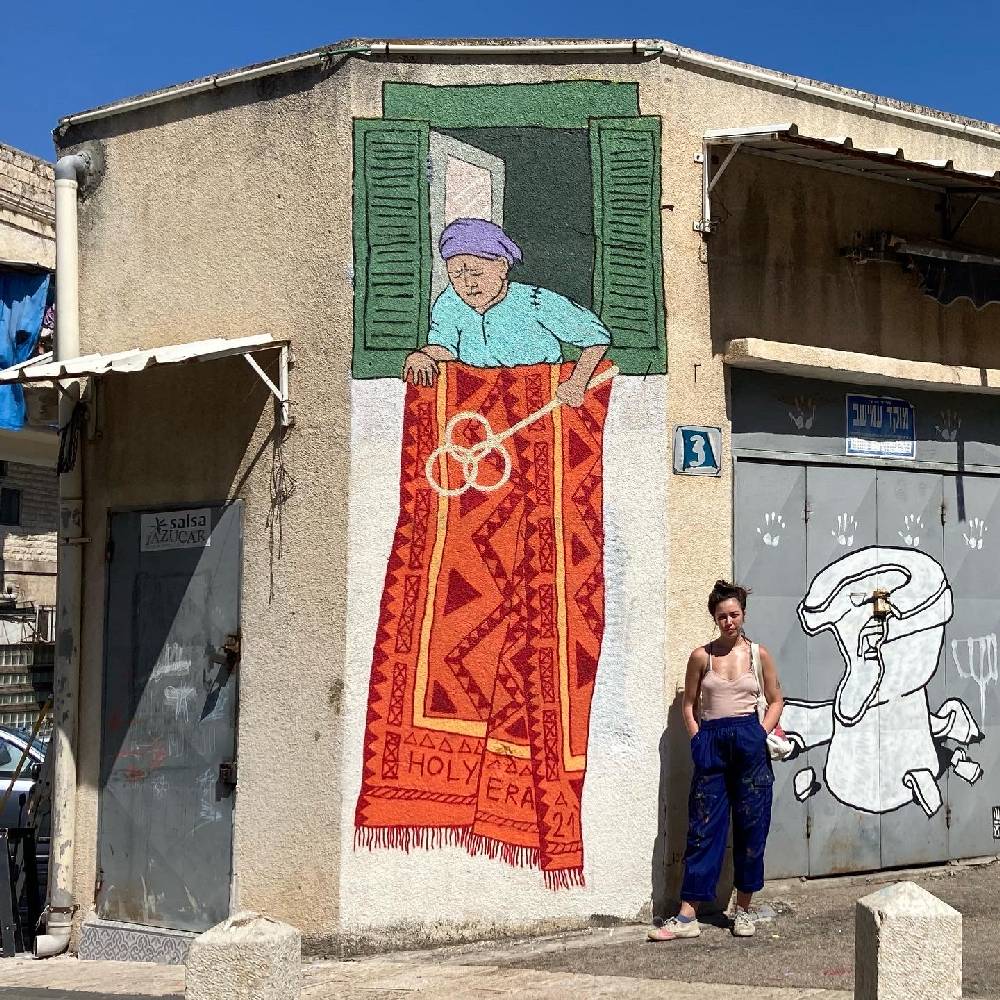
Has Israel got a strong street art and graffiti scene?
Yes, it’s very easy to paint in Tel Aviv, and a lot of people do it.
Is it because there’s a tolerance in society for graffiti?
If you’re not trying to fight with the authorities, they let you be. But I was never too hardcore. I chose chill spots. But in South Tel Aviv, you can paint, no one ever cleans graffiti.
Has it been an advantage or disadvantage for you as a woman who paints?
It depends. In the beginning, when I started to meet painters, maybe they tried to hit on me. When I didn’t want to go out with them, I didn’t get invited to paint any more. That was difficult for me because I didn’t know any women who painted.
As a woman, when you’re in a public space, you get watched. Especially if someone sees you paint, you get much more attention. So, in my experience, it’s more difficult.
Sometimes though, if a cop or a local that isn’t happy with you painting comes along, you can relax the person easier being a woman.
It’s easier to negotiate.
Exactly.
If people check your Instagram, they’re gonna see a lot more tattoos than paintings. Is that your other passion?
In fact that’s what I do most. That’s how I make a living. My last trip to Europe combined the artist residency in Portugal with tattoo guest spots in Paris and Barcelona. I was supposed to tattoo in Lisbon after the residency, but COVID changed my plans and unfortunately, I had to go home early.
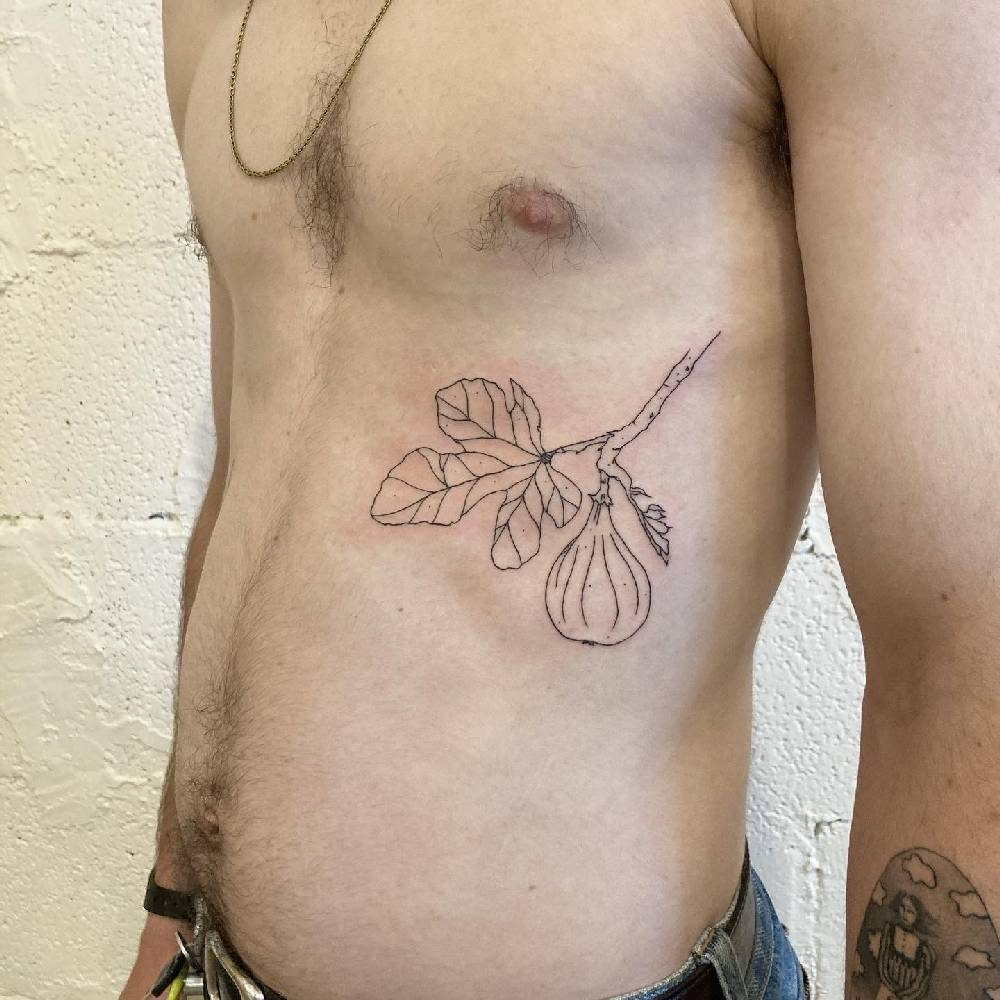
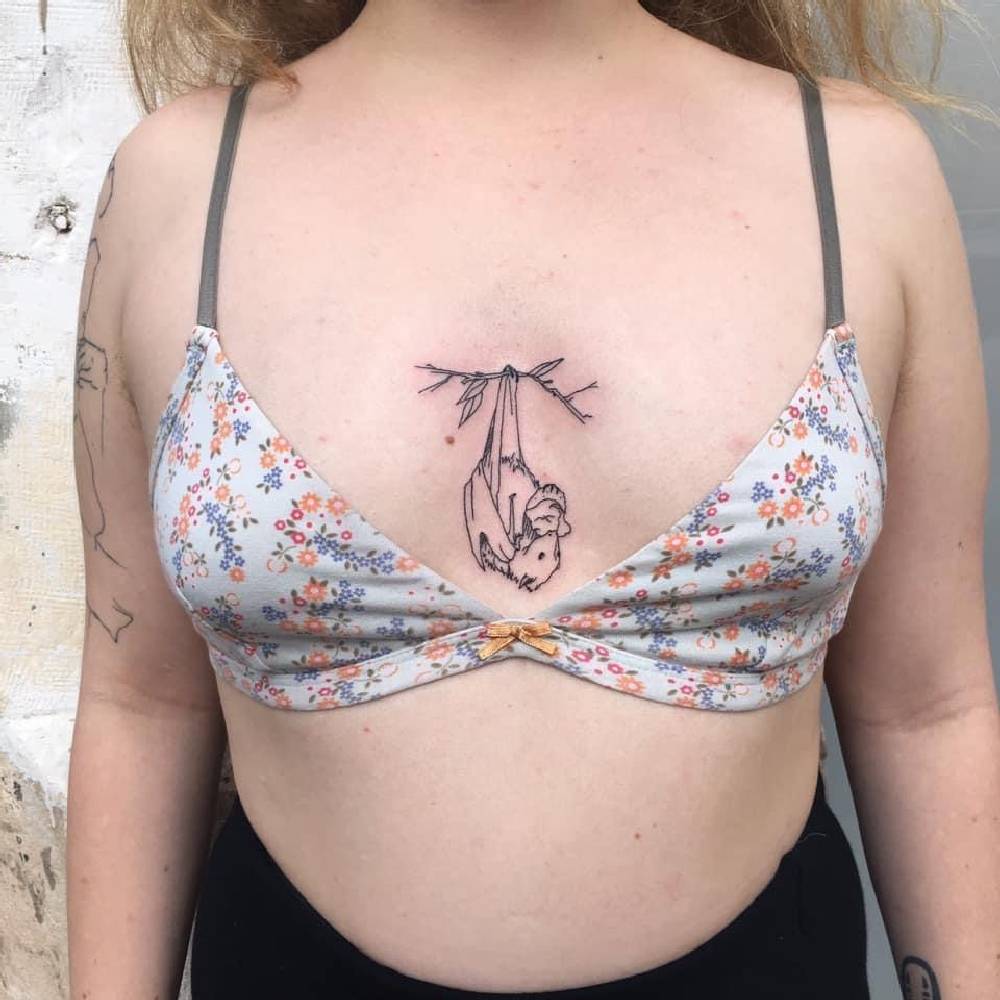
Can you tell us about the series you’re working on?
It’s a series of animation loops painted on walls, expressing the female gaze at different positions of women in the public space. I don’t know how many pieces will be in the series, but I want to do as many as possible. It started with a wall I was invited to paint in the Dead Sea, in the desert in Israel. It was a project that aimed to raise awareness about the critical state of the Dead Sea.
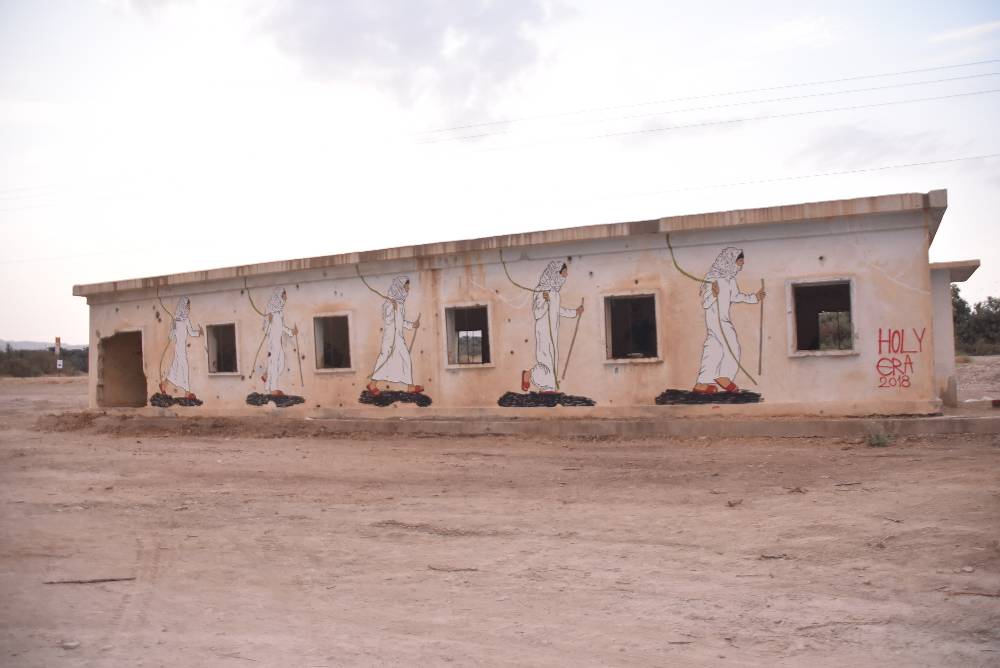
When they sent me a picture of the wall, I didn’t know how to approach it because it was very wide and divided up with windows. I figured it could be nice to do an experimental animation. I come from the street art world and then I studied animation, so it was a good opportunity to combine the two.
I decided to paint five frames, which I edited to make the finished piece. I painted a walk cycle of a native woman. When I got to the site, I saw the whole wall was perforated with bullet holes from the war in 1967. The people from the project asked me if I wanted the wall to be fixed, but I said no. It adds a lot to the work, and now the woman is walking through the bullets forever.
It’s interesting for me because it’s a mural and animation which is also site-specific, the relationship between the painting and the location, creates the meaning of the work.
400 Years In The Desert from Holy Era on Vimeo.
How did the next part of the project come about?
The second part, ‘Wakeup Call’ was at Konvent, near Barcelona. The third part, ‘Labor’, was at an industrial area managed by PADA residency in Barreiro a bit south of Lisbon. All the land is polluted so you can’t do much there, but there are huge spaces for artists to come and do stuff.
I wanted to pay tribute to the women that used to work in the abandoned factories in the area. It was a time when Portugal was still a dictatorship, and women weren’t allowed to work. When women were finally allowed to work, the factories gave them jobs and childcare as well as a place to live. It was the first time that there was a healthcare system in Portugal, which extended to the whole country.
They had everything there: houses, schools and culture. The men felt trapped, but the women were happy because they had the freedom to work and earn money. It perfectly emphasized the gender gap, and what was important for females and males.
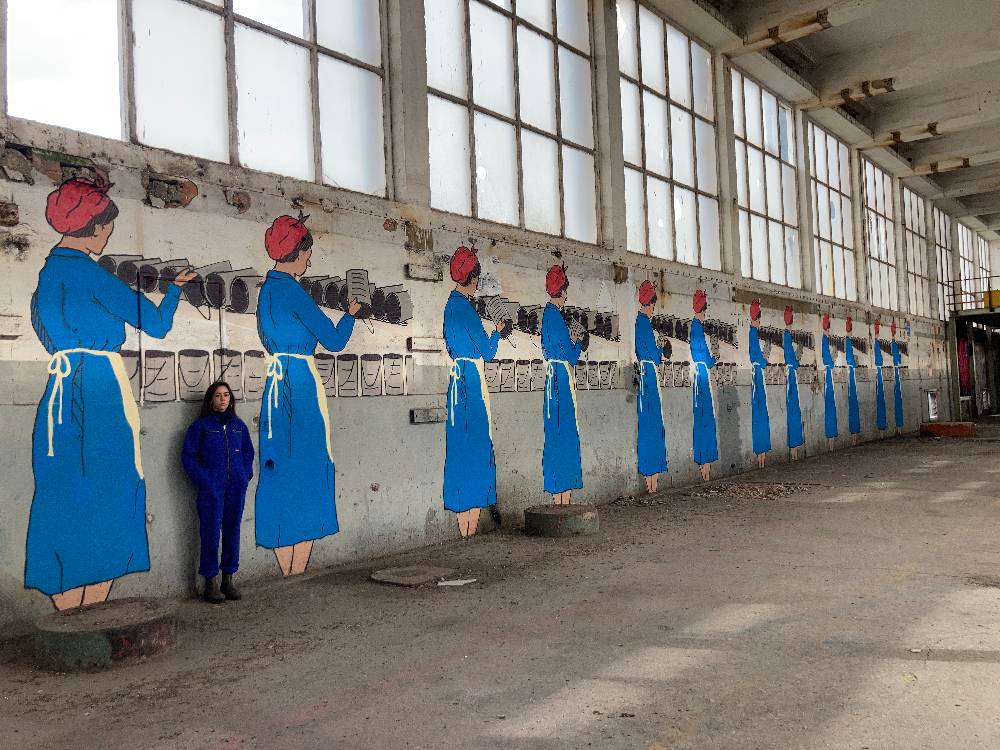
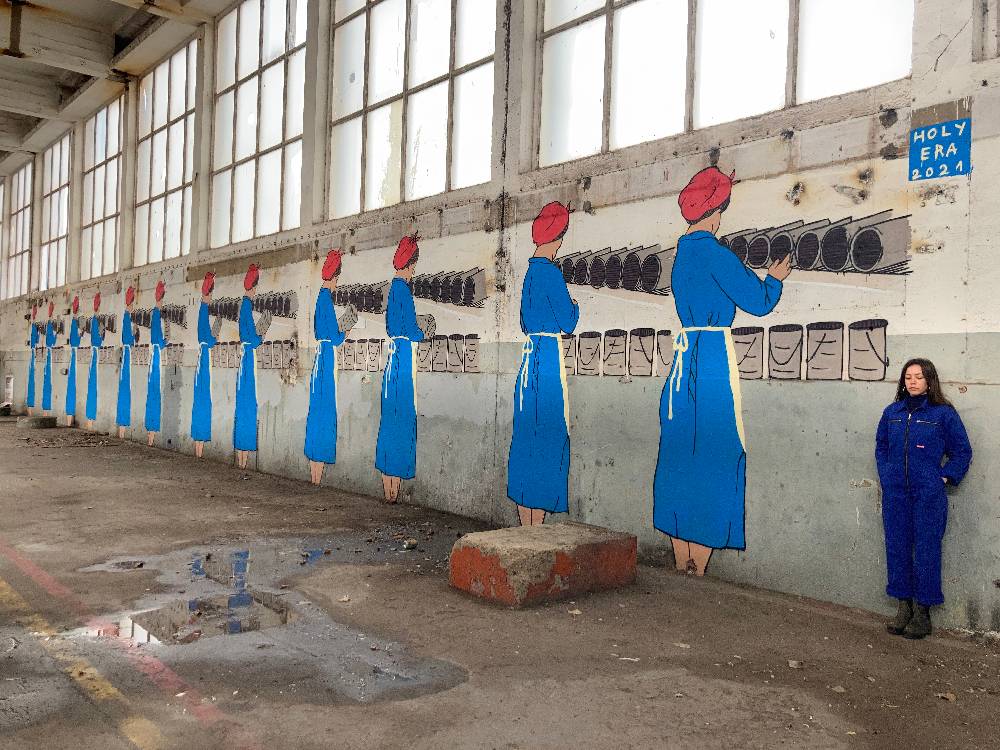
We stayed in the houses that the former workers had. I decided to paint in an old paint factory. It was big, 12 frames, almost 70 meters squared. It was very systematic to paint the same frame over and over. My experience was connected to the experience of the workers life. I decided to call the work ‘Labor’, referring to both paid work and childbirth.
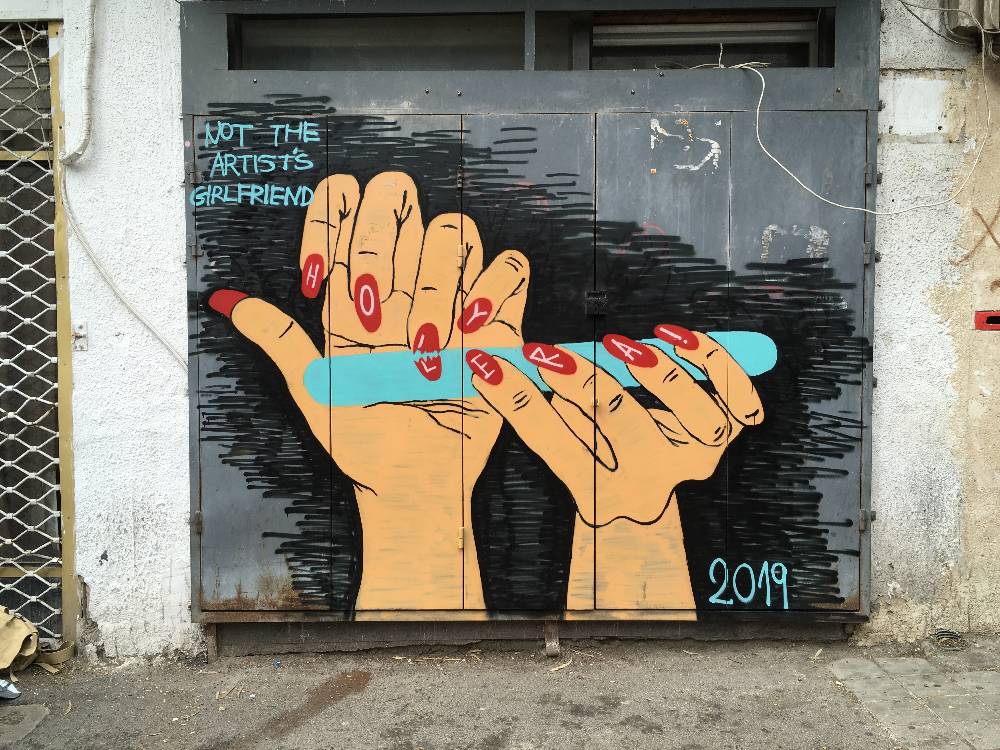 ShareMarch 31, 2022
ShareMarch 31, 2022
